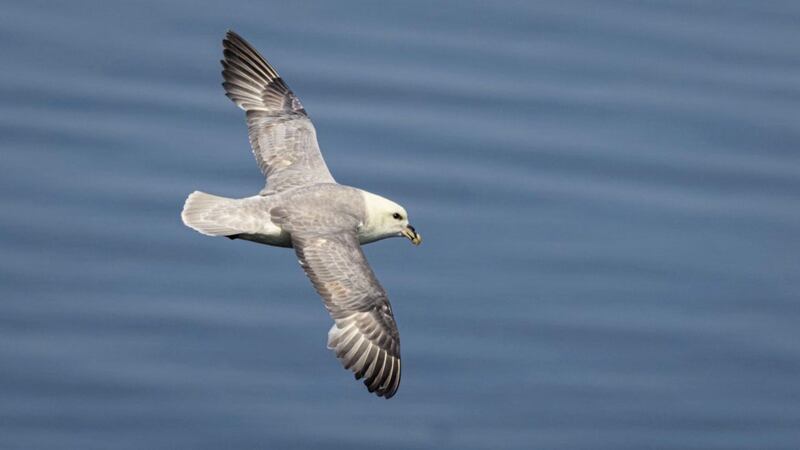SUMMER days often draw us to the coast, with its refreshing seawater and panoramic cliff-top views and walks. As well as their aesthetic value, coastline habitats have their own animal and plant community conditioned to thrive in the unique landscape where land and sea meet.
This was evident to me during a recent walk around the peninsula at Mullaghmore Head, Co Sligo. Under the domineering presence of Ben Bulben mountain, and imposing cliffs of Slieve League across the bay, I enjoyed the company and views of the many seabirds patrolling the cliff edges and Atlantic swells.
One of those birds, the northern fulmar, appeared to follow me, like a sentinel, hugging the rocky contours of the cliff face with its long glides and rapid stiff wing beats, cackling and laughing along the way.
Although the bird superficially resembles a seagull, with its overall grey and white colouring, Fulmarus glacialis belongs to the bird order Procellariiformes or tubenoses, which also includes the albatross, shearwater and petrel groups.
The fulmar is much stockier than gulls, with a thick neck and distinctive stout bill, hooked tip and tube-shaped nostrils on the upper mandible. It flies with stiff wings, gliding along before employing shallow wing beats and, when necessary, hangs in strong updrafts close to the cliff.
The bird’s tube-shaped nose enables it to excrete a strong saline solution, ridding its body of the excess salt which accumulates from feeding in the sea. Looking over on to the cliff ledges for signs of chicks, I was conscious of another common trait of fulmars, their use of projectile vomiting of evil smelling, oily stomach contents, a defence against attackers.
This regurgitated oil can matt and destroy the wings of predators but is also used as food sometimes for their single chick. The fulmar’s name probably comes from the Norse words f?l meaning stinking/foul and m?r for gull, leading to its often-used Nordic name of ‘foul gull or ghoul’.
A relatively recent addition to our breeding avifauna, the fulmar first bred here in Mayo in 1911. Prior to this they were confined to the more northern countries of Greenland, Iceland and the Faroe Islands. The fulmar nested on the Scottish islands of St Kilda, from the 18th century, where they were harvested for oil, feathers and meat.
Welsh naturalist Thomas Pennant said of the birds which bred there: "No bird is of so much use to the islanders as this: the fulmar supplies them with oil for their lamps, down for their beds, a delicacy for their tables, a balm for their wounds, and a medicine for their distempers."
James Fisher, author of The Fulmar (1952) calculated that the islanders, "caught around 12,000 birds annually". The bird’s breeding range extended to the Scottish coast and continued further south towards Ireland in the early 20th century.
Breeding colonies are also now found along the coastline of north western France. This expansion in range has been attributed to the abundance of fish discards from the increasing number of powerful trawler fleets, providing the fulmar with additional food sources.
I’ve no doubt that the bird was also an important resource for many of our own past island inhabitants and coastal communities, from the Blaskets all the way to Rathlin.
At summer’s end the fulmar, a bird embedded in Arctic folklore and myth, will return to its pelagic life, remaining on the open seas of the North Atlantic until the urge to breed lures them back to land.
If you’re at the coast anytime soon, cast your eye skyward, and watch out for this haunting bird.








